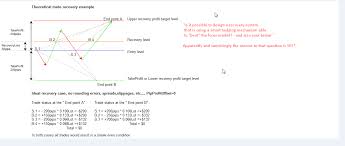
Investing in low duration bond funds can be a good way to take advantage of low interest rate environments. These funds are generally designed to reduce volatility, which in turn lowers bond prices. They also have lower interest risk than many money market funds. These funds invest on debt instruments with maturities of 6-12 months. They also provide a steady source of income. They are often suitable for less risk-averse investors, especially retirees.
Many investors now measure interest rate risk by using duration. Although duration is a common term used in fixed-income investing, some fund managers claim that too much attention to it can cause investors to feel unsafe. There are other important factors to consider, in addition to duration. For example, some bond funds may have short maturities, meaning that they will lose value significantly when interest rates rise. If interest rates were to rise two points, a bond with a tenure of eight years will lose 16 percent of their value. The interest rate risk for the same bond with a one-year duration would be much lower.

Duration is an indicator of your sensitivity to changes in interest rates. Some fund managers are looking to lower this sensitivity through the use derivatives and by purchasing bonds with shorter maturities. Some funds now have duration limits in their prospectuses. Others are changing their names to emphasize the importance of duration.
Pimco, an American bond giant, added two low duration funds in its offshore fund collection. Mark Kiesel runs the Pimco Low Duration global Investment Grade Credit Fund. Mihir Worah is the Pimco GIS Low Duration Real return fund. Both funds invest in a mix of corporate and government bonds. Since inception, they have achieved roughly equal NAV performance. They have seen a narrowing in their NAV performance over the past year.
Investors who are concerned about rising interest rates may also consider the BLW fund. Its strong distribution yield makes it attractive for retirees. It has outperformed many bond indexes over recent years, and has outperformed S&P 500 over five years. The fund's credit quality is poor, so it tends to underperform during downturns.
BLW has a very low duration which can be a major advantage as it makes it less sensitive to changes in interest rates. A bond with a term of eight years would lose 16 percent if interest rates rose one point. A bond with a length of just one year would see a loss of only 2 percent. Low credit quality and maturity dates can help reduce interest rate exposure.

Many bond fund investors have become concerned with the impact of rising rates on the long-term price of their bonds. The yield on a 10-year G-sec has risen significantly after the RBI cut key policy repo rates in April. However, the yield remains far from zero. Investors should keep an eye on the markets for potential edginess.
FAQ
What role does the Securities and Exchange Commission play?
The SEC regulates securities exchanges, broker-dealers, investment companies, and other entities involved in the distribution of securities. It enforces federal securities laws.
What is a bond and how do you define it?
A bond agreement between 2 parties that involves money changing hands in exchange for goods or service. Also known as a contract, it is also called a bond agreement.
A bond is typically written on paper, signed by both parties. This document includes details like the date, amount due, interest rate, and so on.
The bond is used for risks such as the possibility of a business failing or someone breaking a promise.
Bonds are often used together with other types of loans, such as mortgages. The borrower will have to repay the loan and pay any interest.
Bonds can also help raise money for major projects, such as the construction of roads and bridges or hospitals.
A bond becomes due when it matures. This means that the bond owner gets the principal amount plus any interest.
Lenders can lose their money if they fail to pay back a bond.
How are securities traded
The stock market lets investors purchase shares of companies for cash. Companies issue shares to raise capital by selling them to investors. When investors decide to reap the benefits of owning company assets, they sell the shares back to them.
Supply and demand determine the price stocks trade on open markets. The price of stocks goes up if there are less buyers than sellers. Conversely, if there are more sellers than buyers, prices will fall.
There are two options for trading stocks.
-
Directly from your company
-
Through a broker
Statistics
- Our focus on Main Street investors reflects the fact that American households own $38 trillion worth of equities, more than 59 percent of the U.S. equity market either directly or indirectly through mutual funds, retirement accounts, and other investments. (sec.gov)
- Even if you find talent for trading stocks, allocating more than 10% of your portfolio to an individual stock can expose your savings to too much volatility. (nerdwallet.com)
- For instance, an individual or entity that owns 100,000 shares of a company with one million outstanding shares would have a 10% ownership stake. (investopedia.com)
- US resident who opens a new IBKR Pro individual or joint account receives a 0.25% rate reduction on margin loans. (nerdwallet.com)
External Links
How To
How to Invest in Stock Market Online
Stock investing is one way to make money on the stock market. There are many methods to invest in stocks. These include mutual funds or exchange-traded fund (ETFs), hedge money, and others. Your investment strategy will depend on your financial goals, risk tolerance, investment style, knowledge of the market, and overall market knowledge.
To be successful in the stock markets, you have to first understand how it works. Understanding the market and its potential rewards is essential. Once you know what you want out of your investment portfolio, then you can start looking at which type of investment would work best for you.
There are three main types: fixed income, equity, or alternatives. Equity refers a company's ownership shares. Fixed income refers to debt instruments such as bonds and treasury notes. Alternatives include things like commodities, currencies, real estate, private equity, and venture capital. Each category has its pros and disadvantages, so it is up to you which one is best for you.
You have two options once you decide what type of investment is right for you. The first is "buy and keep." This means that you buy a certain amount of security and then you hold it for a set period of time. Diversification refers to buying multiple securities from different categories. You could diversify by buying 10% each of Apple and Microsoft or General Motors. Buying several different kinds of investments gives you greater exposure to multiple sectors of the economy. This helps you to avoid losses in one industry because you still have something in another.
Another key factor when choosing an investment is risk management. Risk management can help you control volatility in your portfolio. If you were only willing to take on a 1% risk, you could choose a low-risk fund. However, if a 5% risk is acceptable, you might choose a higher-risk option.
Learn how to manage money to be a successful investor. A plan is essential to managing your money. A good plan should include your short-term, medium and long-term goals. Retirement planning is also included. Sticking to your plan is key! Don't get distracted with market fluctuations. You will watch your wealth grow if your plan is followed.